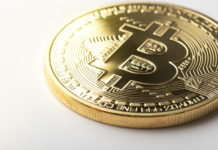Pride month-Thoughts
“ The Lord is my shepherd and he knows I am Gay” famous words by Troy Perry founder of the Metropolitan Community Church. Words welcoming people with alternate sexuality into the church, into acceptance. The month of June is now celebrated as pride month to celebrate the coming out of people of alternate sexuality, their acceptance, and attempts to integrate them into mainstream society. Lesbian, Gay, Bisexual Transsexual, Binary sexuality, people who collectively identify as Queer or the LGBTQ community celebrate the birth of their movement towards self-determination and acceptance during the various pride events organized in the month of June.
One of the most powerful statements regarding pride month is about Brenda Howard, often referred to as the Mother of pride. “The next time someone asks you why LGBT Pride marches exist or why Gay Pride Month is June tell them ‘A bisexual woman named Brenda Howard thought it should be “. That’s the strength of determination of the people who have pioneered the LGBTQ community. Technically this is held in June to commemorate the Stonewall riots, which is recorded as a pivotal instance in the Gay rights movement. In 1969, Stonewall Inn, in Greenwich Village of New York’s Manhattan area was raided in the early morning hours of June 28. This was a homophilic establishment of that time which welcomed patrons of differing sexuality allowing them a safe place to mingle. The patrons of the bar and other residents of the neighbourhood identifying with alternate sexuality, fought back when the police raid turned violent. The spontaneous demonstrations over the next day and later are today referred to as the stonewall riots. A moment that has been definitive in the LGBTQ rights movements.

The next year, to commemorate this day, a march was organized in New York, Los Angeles, and San Francisco on June 28th. Subsequently, over the years the last Sunday of June has been picked as the main pride event commemorating this historical day. This has subsequently also become a day for celebrating one’s sexuality, speaking out for equality and human rights, and all the politico affirmations consequent towards the establishment of such rights. Some events have taken up a carnival feel while others maintain some sobriety, but across events, it is an attempt towards establishing the need for acceptance. It is an attempt towards bridging the gap between homophilic and homophobic people.
Historically this has not been an easy journey. When the Los Angeles city police chief was approached for a permit for a parade, he had akinned a parade of a group of homosexuals to a parade of a group of thieves and robbers. Such was the extent of homophobia entrenched at that time. When permission was finally grudgingly approved for a parade down Hollywood boulevard the fees demanded were exceeding a whopping 1.5 million dollars. Then American civil liberties Union intervened and led to concessions but a 1,500 $ police service fee still persisted. It was only at the eleventh hour that the California Superior court intervened and ordered the police force to provide permission and protection to the parade as it would to any other such gathering. The constitutional guarantee of “freedom of expression” was thus upheld. The organizers of the pride were always apprehensive of violence with death threats coming aplenty to the organizers. But finally, over 1000 homosexuals and their friends staged a full-blown parade, silent and sombre to today’s standards down the famous Hollywood boulevard.
Similar history can be traced to the New York pride where a resolution by the Eastern Regional Conference of Homophile Organisations at Philadelphia led to an annual reminder parade to be held in New York. Christopher Street Liberation Day Umbrella Committee was formed and was pivotal in the organization of the pride parade. Funding was collected by various gay rights organizations. Among many of the organizers who played a crucial role in its organization was Brenda Howard a bisexual activist who became famous as the “mother of pride” for her role in organizing the parade. The movement slowly spread to other cities and then internationally. London hosted its first parade in 1972, 3 years after the stonewall riots. It has since become globally spreading being hosted in various cities across the world small and big. Every continent and region of the world today has distinctive parades celebrating pride. The small nation of Mauritius is proud to hold a pride event along with its cousins from Africa like South Africa and Uganda. In Asia along with the multiple cities in India that host pride events, Hongkong Taiwan and even the tiny republic of east Timor hold Pride events.As do Israel, Japan, South Korea, Philippines, and Vietnam among significant countries. Europe is more profligate in the number of parades organized with nations of all sizes and dispositions supporting pride events. Whether that be tiny Bosnia, Croatia. Bulgaria, or the liberal nation like Denmark, Finland. The larger ones like France, Germany Italy, Netherlands, or Britain. Pride events have flourished. Even ultra-conservative nations like those of the erstwhile USSR bloc like Russia, Lithuania, or the Islamic influenced Turkey, Pride has found its pride in each of these nations through celebrations.
Pride parades usually are a mix of serious themes intermixed with gaiety and celebration. The original idea behind such parades was to act as critiques of behaviours supportive of heterosexuality being the preferred and natural order of sexual orientation and to establish that homosexual behavior was not dissident to society. The ideology was to mainstream this “queer” culture and bring it out in the open. The parades sought to promote and affirm dignity, equality visibility of the LGBTQ people as a social group. It sought to establish pride as the predominant outlook of members of this community as opposed to shame and social stigma that has traditionally been associated with people of these communities. Across the years’ organizers have shed their radical elements and outlooks, focussing more on the pride element than the liberation outlooks while organizing the parades. Depending on the socio-political and theological acceptance of the community the degree of political and activism nature of the homophilic rights have been expressed in the parades. In more accepting cities the parades are more of carnivals, involving floats, drag queens, dancers, and pretty vibrant and loud music. In not-so-accepting ones, the expression is focussed more on political and rights activism.
As the pride culture has spread across the globe more and more cities have joined with their own signature celebrations. initially, these were called gay events even though the participants encompassed the entire range of the queer community. Towards the end of the 1980s, the language started to become more inclusive of all elements of the LGBTQ spectrum such that today it is more generically called just pride parades. Another element that became a symbol of the pride movement was the rainbow flag that is associated with pride events. Although the six-colour rainbow flag that we know today came into prominence around 1994, the first pride flag was hand-made and unfurled on June 25, 1978. Inspired by the sky, Gilbert Baker, used each colour to represent an inherent theme, sexuality was represented by hot pink, life by red, orange represented healing, green represented mother nature. Yellow was for sunlight, turquoise art, violet spirit, and indigo harmony. As the flags moved into production for ease the pink and turquoise stripes were dropped and the indigo was converted to deep blue giving the current 6 colour version of the pride flag. For the 25th anniversary, Baker created a mile-long version of the flag. The flag standing out to the people of the community as a symbol of coming out in open from the shadows, to live the truth of their own sexuality rather than the lie that is foisted on to them by society.
Pride month has thus come to celebrate the right of an individual to identify and chose his sexual preference, to be comfortable in his choice of sexuality, and to attempt to integrate such people with heterosexual and even homophobic people of the society. Love to most people knows no boundary, It had transgressed the divides of race caste, and colour. It has always transgressed the limitations of socio-economic boundaries. Today love is breaking boundaries established of gender even. Pride month is teaching us not just t0 accept such alternate sexual choices and orientations but also to celebrate in such choices. It is empowering people to come out to shed the shackles of shame and guilt that are used as fetters to suppress such notions and to burst forth as the rainbow does from behind the gloom of clouds. The rainbow of pride also bursts forth in its magnificence from behind the clouds of ignominy, suppression guilt, dishonour, fear, and above all self-doubt. The magnificent colours representing not just the diverseness of orientation and choices available to an individual in the ways of love but also the unity of the people of the community to support each other in these choices. Love, they say conquers all, pride month actually signifies how encompassing the word all is when it comes to love. But pride IS important, ‘cos someone tonight still believes they are better off dead, than being themselves.






